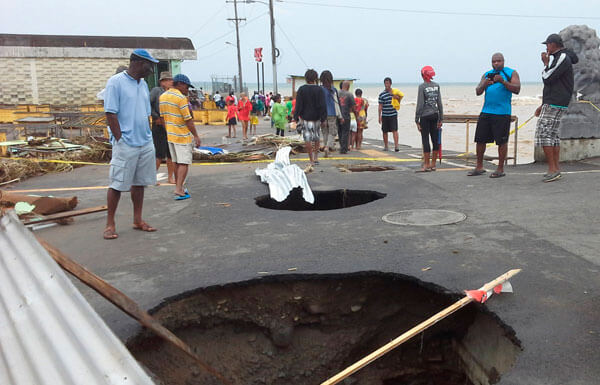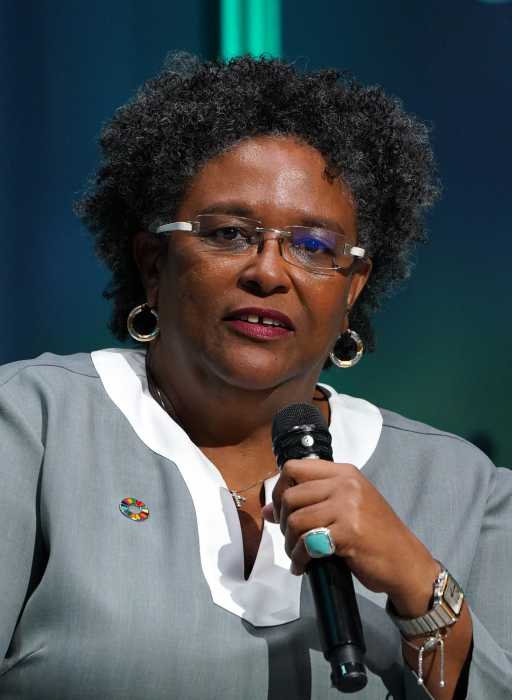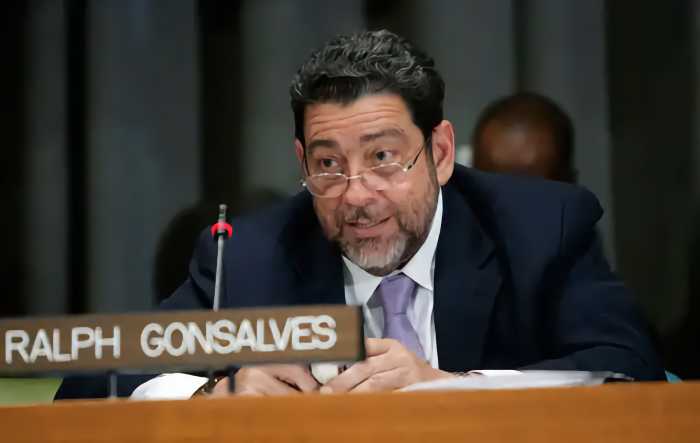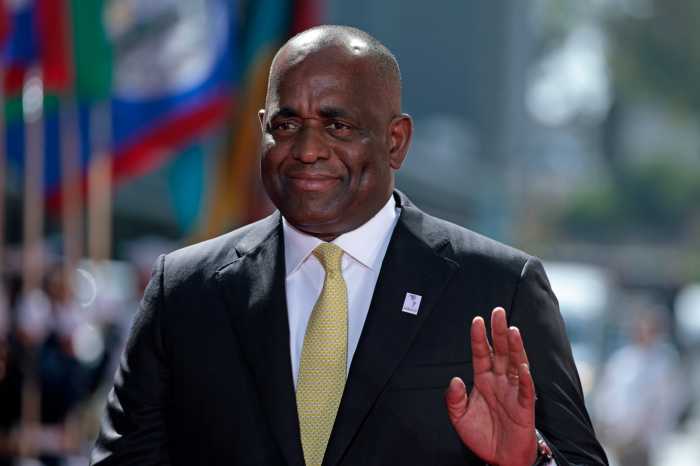There was a time when New York’s only Black-owned radio station focused on the Caribbean community. In times of struggle, pageantry, or political strife, through good times and bad WLIB-AM proved more than a flagship radio station for the Inner Cities Broadcasting Corporation but the source to rely on for news and information.
Now with not a single Black-owned radio station to turn, fragmented programming on a myriad of brokered radio stations seem inept at disseminating information pertinent to listeners yearning for news from the region.
Case in point is the recent travesty that beset Dominica when Tropical Storm Erika struck the Nature Island last month.
A major television news outlet referred to Dominica as the Dominica Republic.
It is an error easy enough for anyone to make but unforgiveable for a reputable news channel. Yet it was repeated through several broadcast reports.
In addition, except for a few video images shown, the plight of the people has not been revisited by major media or the many Caribbean outlets purported to offer a One Caribbean approach to communication.
Truth be told, a great many programmed more news about Pre-Labor Day activities and the main day parade along Brooklyn’s Eastern Parkway some even over-saturating the media landscape with more carnival coverage than Dominicans and concerned citizens might appreciate.
Were it not for social media, a great majority might not have known that Dominicans are hurting.
The government of the Cayman Islands government recognizes the void and need and recently sent $500,000 to aid the island from the ravages wreaked by Tropical Storm Erika.
The storm left at least 31 people dead and dozens more missing and caused significant damage to infrastructure — approximately totaling $370 million.
Cayman Islands Premier Alden McLaughlin said he hoped his territory’s donation would assist in the recovering effort that is underway.
“I really do think this is something we must do. We know devastation first-hand. They are our brothers and sisters too,” he said, with memories of the death and destruction of Hurricanes Ivan and Paloma caused to the Cayman Islands in mind.
McLaughlin has been in regular contact with Dominica’s Prime Minister Roosevelt Skerrit who reported that more than 370 homes in the island were partially damaged or destroyed and two communities were evacuated because of instability of the soil and risk to homes.
“There is little doubt that the past few weeks have perhaps been some of the most challenging times in Dominica’s modern history. However, as Caribbean people, resilience is embedded in our DNA and as your forbearers did on many occasions before, you too will rebuild. Regrettably, we have been there too,” McLaughlin wrote in a letter to Skerrit.
“The powerful images and heart wrenching stories that have been shared with us bring to mind hurricanes Ivan and Paloma and our own vivid memories of the struggle to recover.”
Hurricane Ivan hit the Cayman Islands at Category 5 strength in 2004, killing two and causing about $2.86 billion — almost double the territory’s GDP — in damage.
Hurricane Paloma, which passed directly over Cayman Brac and Little Cayman late in the 2008 Atlantic hurricane season, caused tremendous damage to those islands.
Grand Cayman was practically unscathed but the hurricane caused a total of $154.4 million in losses.
In late August, Erika dumped about 10 inches of rain on Dominica in only a few hours, turning rivers on the mountainous island into torrents and hillsides into deadly mudslides.
In addition to the aid from the Cayman Islands government, McLaughlin urged Cayman’s residents to help in the effort to get dry food items and other necessities, and cash donations, to assist those in need. He said if enough goods were collected, Cayman Airways would fly them to a nearby island for transportation to Dominica, since the only operating airport, Canefield, cannot support the landing of Boeing 737s.
The island’s main airport, the Douglas-Charles Airport, was significantly damaged and requires major reconstruction.
The CARICOM Youth Ambassadors (CYAs) have also launched a two-month ‘I am CARICOM’ drive to raise money for Dominica.
“This drive has been named ‘I am CARICOM’ as we declare as one single Caribbean Community to be each other’s keeper,” the CYA said in a release.
“The pain and suffering caused by the occurrence of this natural disaster continues to ache the hearts of the members of our Caribbean Community. The role of this community is to help our sister island restore her brokenness and to give her a sense of hope in such trying times,” it added.
Through the drive, the CYAs will seek monetary contributions from respective country district youth councils, schools, community groups and churches of the member states where Youth Ambassadors are present and make those funds available to the two Youth Ambassadors in Dominica to assist young people there in need.
The effort officially began on Wednesday and ends on October 31.
“The CARICOM Youth Development Action Plan (2012-2017) outlines six major goal statements of which Protection, Safety and Security, and Health and Wellbeing are highlighted. It is not always easy to protect a nation from natural disasters but, as a Caribbean unit, the mandate is to ensure that security is restored when it has been broken down and that the health and wellness of its people are take care of,” the CYAs said.
CYAs are young Caribbean nationals mandated by CARICOM Heads of Governments to advocate for and educate young people about regional priorities such as HIV and AIDS and the CARICOM Single Market and Economy.
They perform a dual role, addressing youth issues at the national level within a regional strategic framework, as well as bringing national issues to the attention of the region’s policy makers and planners.
More than 400 people are now in shelters across Dominica following the destruction of 271 houses across the country – the vast majority from Petit Savanne which was evacuated after being declared one of nine special disaster areas – by floods and landslides caused by Tropical Storm Erika’s heavy rains.
The Caribbean Disaster Emergency Management Agency (CDEMA) says approximately 405 persons are in eight shelters across the island.
In its latest situation report on Dominica, they said 709 people had been evacuated from Petit Savanne – a village in the southeast of the island that was the worst affected by the storm, and from which most of the more than 25 who died came.
Skerrit said as far as he was concerned, there was no way to rebuild Petite Savanne.
The government will build new homes in a completely different area for residents of Petite Savanne. It is one of nine communities in Dominica that has been designated special disaster areas. Residents had to be evacuated from that area by sea, after flooding and landslides buried houses and made the area unstable.
Residents of Dubique will also be given homes at a new site.
Of the houses destroyed, most were in Petit Savanne while the others were located in other parts of the country. As for the damage caused to the infrastructure, CDEMA said several communities remain cut off as a result of damage to roadways and bridges and the clearing of roads blocked by debris is ongoing; efforts to restore mobile and Internet services are underway; all FM stations and two television stations are operational; three hospitals and 43 health centers are operational; the Douglas-Charles Airport remains closed; the Canefield Airport is open to helicopters and small aircraft; all sea ports are open; 22 of the island’s 75 primary and secondary schools are either unreachable or damaged, resulting in the postponement of the opening of the school term to September 21; and some early childhood centers are also damaged, although the extent and number are yet to be ascertained.
PM Skerrit reported that preliminary assessments indicate that Dominica suffered losses in excess of $185 million in damage to its infrastructure.
He said there was more than $227 million in damage to the country’s main roads and bridges alone; it would take $14.6 million to get the main airport, the Douglas-Charles Airport, back into operation; and the clean-up cost is estimated at $4.4 million.
The United States dispatched Red Cross workers as well as $150 million. The Office of Emergency Relief
Here in New York, relief efforts have been mounted by a number of independent groups and organizations. Among them senior citizen centers, churches and Caribbean support groups. Food and clothing drives have been initiated at various sites.
As Tropical depression Grace approaches the eastern Caribbean, concern for the island is again heightening that even a little rain could cause major problems.
Evacuations may also be necessary.
According to Don Corriette, the island’s national disaster coordinator –“If Grace begins to lose grace, it may not be necessary.”
To send a financial contribution to help Dominica the following locations have been confirmed to be safe dispensaries:
Federal Reserve Bank (NY)
SWIFT: FRNYUS33
ECCB’s account number at the FED: 021083695
FFC Government of Dominica account 310301005
Bank of Canada
SWIFT: BCANCAW2
ECCB’s account number at Bank of Canada: 30641-1
FFC Government of Dominica account 310301005
The website for financial contributions and to be kept apprised of updates in Dominica is www.OPM.GOV.DM
Catch You On The Inside!





















